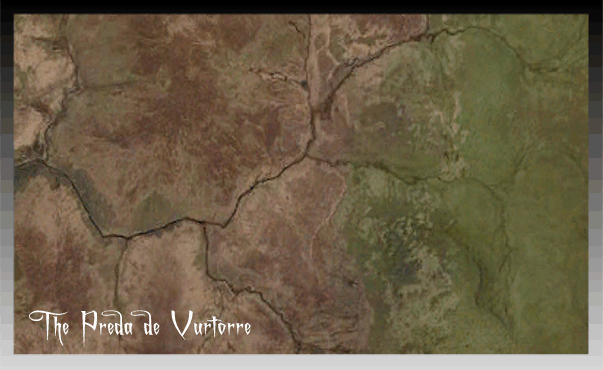
Anybody that regularly walks on Dartmoor cannot help noticing that cattle and sheep can usually be seen around the same vicinity time after time. These encounters can be on the commons or up on the high moors throughout the grazing seasons. Additionally the vegetation where the livestock are located is visibly greener than the surrounding landscape and is distinctly lacking in gorse or heather. The main reason for both is that there is shelter and the grazing is lush, therefore the livestock tend to regularly congregate in such areas and because of this the gorse and heather etc. cannot thrive. There is nothing unique about this and to some extent the same has been happening since the prehistoric herders grazed their livestock on the moor.
Animals are not stupid and if they know where shelter and good grazing is to be had then they will remain in that area thus negating the need to search for other sources. This knowledge is passed down to the newborn and so it is possible for generations to use the same grazing locations.
For centuries the Moormen who drove the livestock out onto the moor were well aware of these areas and made a point of taking the animals to them. Originally these spots were called ‘predas’, the word originates from the Latin word præda. Unless I am missing something this seems an odd term to use as most Latin translations give the word to mean; profit or gain. Doubtless there was a profit to be made from the animals that came from the predas but it’s not what one would expect from a landscape feature?
William Crossing defines predas thus; “There are certain spots in favour with the Moormen, where the pasturage is more than usually good, and their predecessors appear to have appreciated them also. In an early agistment roll such spots called “predas,” are named under the head of the Forest quarter in which they are situated. Thus we have “Preda de Condyshull,” the “Preda de Brembrok,” the “Preda de Gnapptorre,” and so on.” pp71 – 73. Below is a list of those which have been found in various documents along with their locations:
| Name | Date | Location | OS Grid Reference |
| Preda de Aunnacomb | 1346 | Amicombe Hill | SX 570 860 |
| Preda de Brembrok | 1346 | Dinger Hill | SX 580 890 |
| Preda de Condyshull | 1346 | Conies Down | SX 582 792 |
| Preda de Crewtor | 1346 | Crow Tor | SX 607 787 |
| Preda de Erme | 1346 | Green Hill ? | SX 636 678 |
| Preda de Gnapptorre | ???? | Ryders Hill ? | SX 660 690 |
| Preda de Irm | 1346 | Green Hill | SX 636 678 |
| Preda de Steapedon | 1346 | Steeperton | SX 618 888 |
| Preda de Vurtorre | 1346 | Pinswell | SX 585 783 |
When you look at the above list it is noticeable that many of the predas are near to each other. Certainly in the case of those to the north this could well be that they are located in a particularly sheltered moorland landscape which is favourable to grass growth. A good example of this can be seen from the aerial photograph below which shows the contrast between the green preda de Vurtorre and the surrounding brown moorland.

In later years the predas became known as ‘lairs’ or ‘lears’ and each Moorman had his own favourite ‘lairage’ to which he would drive the cattle during the grazing period. For instance at one time the lair of Samuel Smith in the southern quarter of the moor was Green Hill, Crossing, 1966. pp.21. It was, and to this day still is, a known fact that wherever the animals were first depastured they would rarely wander far from it. The way that the predas/lairs worked was that the livestock would rest in them during the night and then migrate out to the surrounding hillsides to graze during the daytime. During the 19th century it would be nothing for herds of cattle numbering the hundreds to be pastured upon the lairs. The beauty of this for the Moorman was that when he wanted to inspect them he knew where in the main they could be found. That is not however to say that some beasts did not stray away from the lair which would then involve a search for them. Another benefit of having livestock continually living in the same area is that there is always a fresh supply of dung to fertilise the grasses which in turn makes for lush grazing.
The biggest disadvantage of lairage (especially where sheep were concerned) became far too evident in the 2001 Foot and Mouth outbreak. The mass slaughter of many of the moorland flocks meant that not only had the breeding stock disappeared but their innate knowledge of the various lairs upon which they were pastured. This meant that when the outbreak was finally over those farmers who replaced their flocks found that the new arrivals had no knowledge of the local lairs. Consequently these animals then had to learn their positions on the moor which at first would entail constant and time consuming shepherding to stop straying.
So next time you regularly come across a herd of cattle or a flock of sheep just be aware they are not there by accident. They and possibly generations before them have, through natural instinct and a little help from humans, favoured that location as a preda, lair or lear.

Crossing, W. 1966. The Dartmoor Worker. Newton Abbot: David and Charles.
Crossing, W. 1987. One Hundred Years on Dartmoor. Exeter: Devon Books.
 Legendary Dartmoor The many aspects past and present of Dartmoor
Legendary Dartmoor The many aspects past and present of Dartmoor
